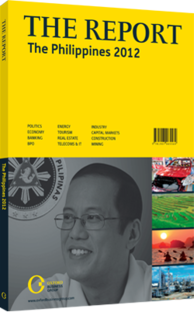Investment catalyst: Numerous incentives have made for a more attractive destination
Two of the most effective mechanisms developed by the government for boosting investment in the industrial sector are the Philippine Board of Investments (BOI) and the Philippine Economic Zone Authority (PEZA). For 2010 the BOI and PEZA attracted a total of P302.1bn ($6.86bn) and P204.39bn ($5.66bn), respectively, in approved investments by foreigners and Filipino nationals, according to BOI data. This marked a 143.3% and 16.6% increase over BOI and PEZA levels recorded in 2009. Combined with the smaller and more targeted Subic Bay Metropolitan Authority and Clark Development Corporation, the amount of investments drawn in totalled P542.6bn ($12.32bn) in 2010. Manufacturing was the single-largest beneficiary, with P215.15bn ($4.88bn) in investments.
LEADING THE WAY: The BOI is tasked with assisting investors in setting up and optimising business operations through its four units: the Investments Promotion Group, Management Services Group, Investments Servicing Group and Project Assessment Group. Some of the assistance offered by the BOI comes in the form of fiscal incentives granted to companies operating within the annual Investment Priorities Plan. These inducements include 100% corporate income tax holidays (ITH), zero duty on capital equipment imports, additional tax deduction on expenses for worker training programmes, and eased restrictions of employment of foreign nationals, among others.
In addition to these incentives, the director of BOI’s strategy and communications department, Doris Esmundo-Lajarca, told OBG that a number of other non-fiscal factors have also contributed to the recent rise in investment. These included increased investor optimism in the current administration’s bid to reduce corruption and improved online centralised bureaucratic procedures, which have cut down on red tape and reduced the process of BOI business registration.
EXPORT FOCUS: While the BOI is a catch-all focal point for a diverse array of industrial operations, PEZA is much more narrowly focused on the export market. Companies must export at least 70% of their output to qualify for PEZA status, although special allowances can be made for companies to sell a small percentage of goods domestically. Approved companies are eligible for numerous benefits, such as an ITH of four years for non-pioneer-status companies and six for pioneer; a tax of only 5% on gross income with exemption for all national and local taxes upon the expiration of the ITH; tax- and duty-free importation of raw materials, capital equipment, machinery and spare parts; exemption from wharfage fees, export tax; value-added tax zero-rating on local purchases; exemption from payment of any and all local government imposts, fees, licences or taxes; and exemption from expanded withholding tax. PEZA also offers additional incentives and extensions for specific industries, such as tourism and IT.
A WARM INVITATION: The strong investment performance displayed by the BOI and PEZA in 2010 has carried through to 2011, with combined year-on-year (y-o-y) investment growth of 30%, according to government figures. Total investments approved for the year amounted to P657.24bn ($14.92bn), up from P526.39bn ($11.95bn) in 2010. The BOI accounted for 56% of the 2011 investments with P368.9bn ($8.37bn), up 22% from 2010, while investments in PEZA grew by a much faster 41% to P288.34bn ($6.55bn), bringing total investments in PEZA to nearly P2trn ($45.4bn) since its inception in 1995. The top-performing sectors included low-cost mass housing, energy, mining, tourism and agriculture. The largest share of investments for 2011 were in Central Luzon, which attracted some 22% of the investment total, while the National Capital Region received 20%, southern Luzon and Caraga each received 13%, and Southern Mindanao brought in 10%.
Under the BOI’s Investments Priorities Plan 2011, the designated priority sectors for future investments include agriculture, tourism, shipbuilding, mass housing, energy, infrastructure, research and development, motor vehicles, green projects, creative industries, disaster prevention, and public-private partnerships.
You have reached the limit of premium articles you can view for free.
Choose from the options below to purchase print or digital editions of our Reports. You can also purchase a website subscription giving you unlimited access to all of our Reports online for 12 months.
If you have already purchased this Report or have a website subscription, please login to continue.

